
Marc Bauer, an artist overwhelmed by too many crises and prizes
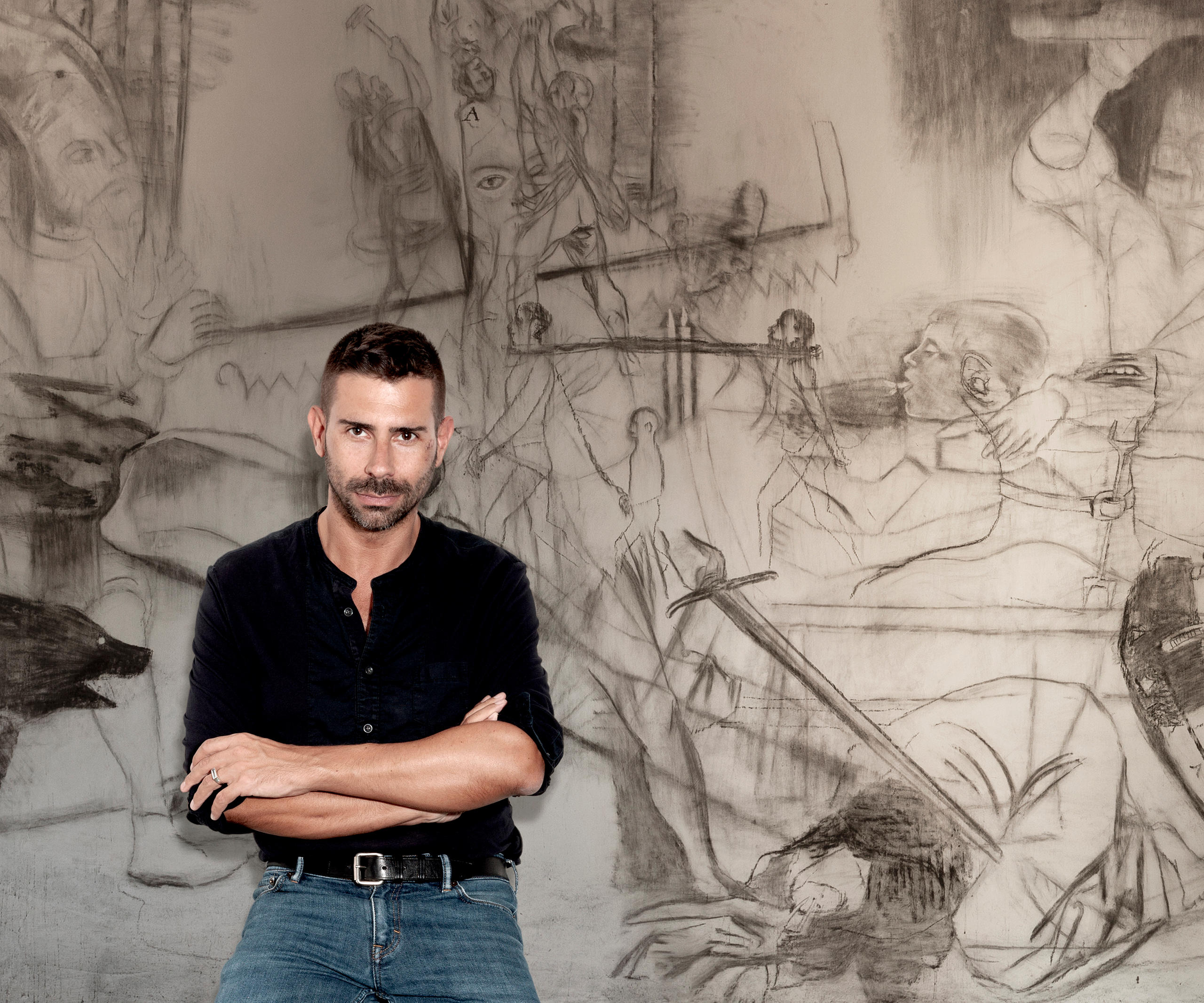
At the Berlinische Galerie, the Swiss artist Marc Bauer has been drawing in charcoal directly onto the high interior walls of the Berlin museum for ten hours a day. It is the run-up to the September 9 opening of “The Blow-Up Regime,” his solo exhibition encompassing such vast themes as the internet, climate change and authoritarian regimes. He says he’s tired.
“I’ll take a holiday after this,” he laughs. “I like this short and intense period when I live with the work for 15 hours a day for a couple of weeks.”
Bauer, 45, is the winner of the 2020 GASAG prize for art relating to technology and science, which includes an exhibition at the Berlinische GalerieExternal link that runs until April 5, 2021. Just a few weeks after learning he had been awarded the prize, he found out he had also won the 2020 Prix Meret Oppenheim, the main Swiss art prize. “I was a bit overwhelmed,” he says.
It’s about Now
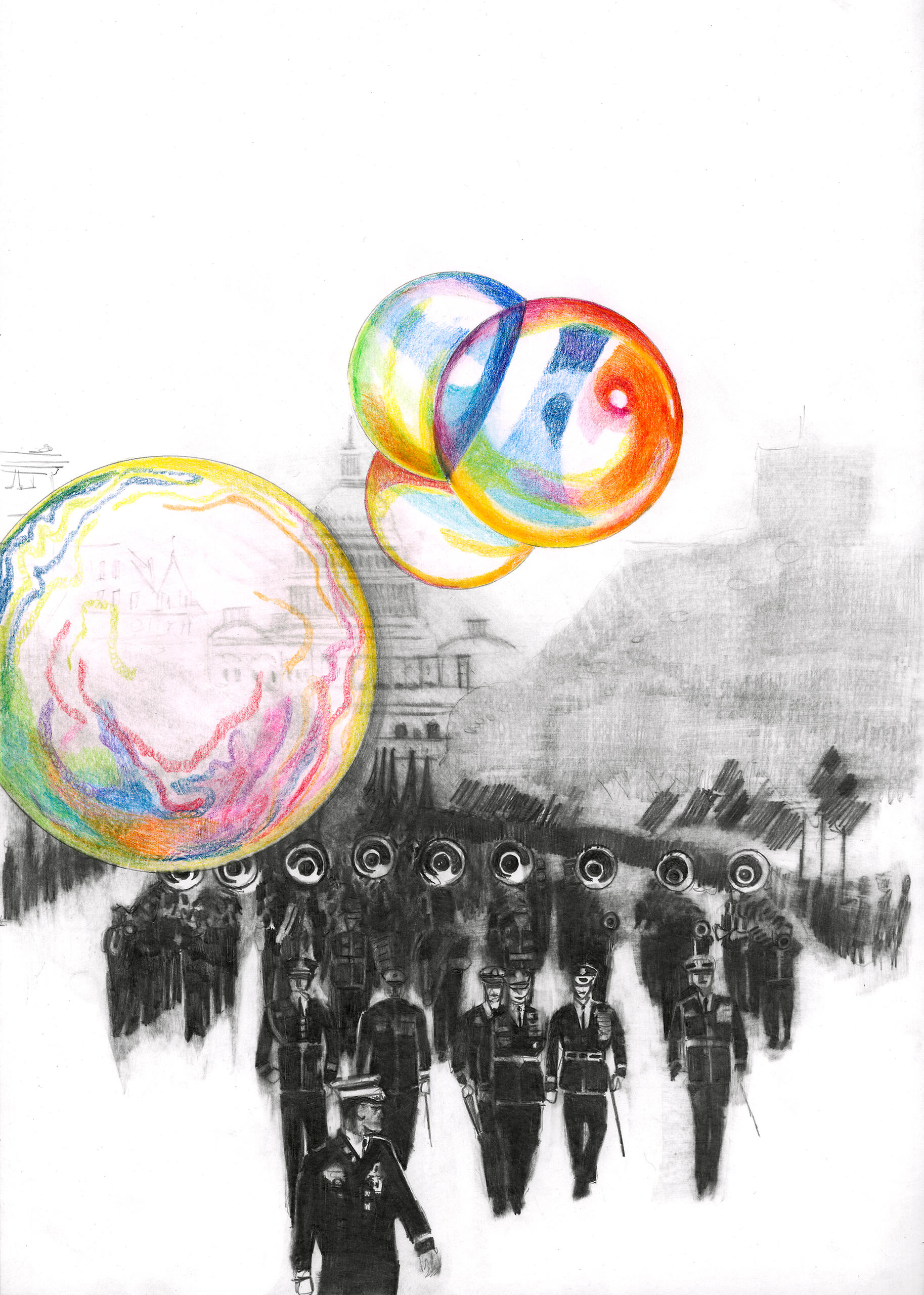
“I wanted to do a show about now,” he says. “I have the feeling we are living in a succession of crises, political, social or ecological. We forgot about the migration crisis, but it’s still there. We are totally overwhelmed by all this. Exceptional seems to be the new normal.”
Though the exhibition was conceived before the coronavirus pandemic, the apocalyptic overtones give it a sense of dread, doom – even terror — that matches our era. A musical recording by Thomas Kuratli, a composer from St Gallen, adds to the menace with sounds of heavy breathing, oppressive military-style band marches and echoing bangs and clashes, interspersed with more dreamlike electronic sequences.
Born in Geneva, Bauer studied at the Ecole Supérieure d’Art Visuel there. He has taught at the Zurich University of the Arts since 2015. Previous solo exhibitions have taken place at the Folkwang Museum in Essen, Frieze Projects in London. Earlier this year, at the Istituto Svizzero in Milan, he used tweets sent by Matteo Salvini, Italy’s interior minister until 2019, to explore the political and manipulative use of images and language.
“The Blow-Up Regime” is Bauer’s first solo exhibition in a museum in Berlin, which – alongside Zurich – is his home town. He says he finds it easier to focus in Berlin than in Zurich, where he has a busier social life. “Usually when I am in Berlin I concentrate on my work,” he says. “In Berlin you can see 20,000 people if you want, but you can also very easily live like a hermit in your flat or in your studio. I find that very comfortable. Here I am much more disciplined, Berlin is much more anonymous.”
The first section of the two-room exhibition at the Berlinische Galerie displays works on paper focusing on the history of the internet and the relationship between war and computer science, with portraits of computer pioneers such as John von Neumann, Konrad Zuse and Tim Berners-Lee.
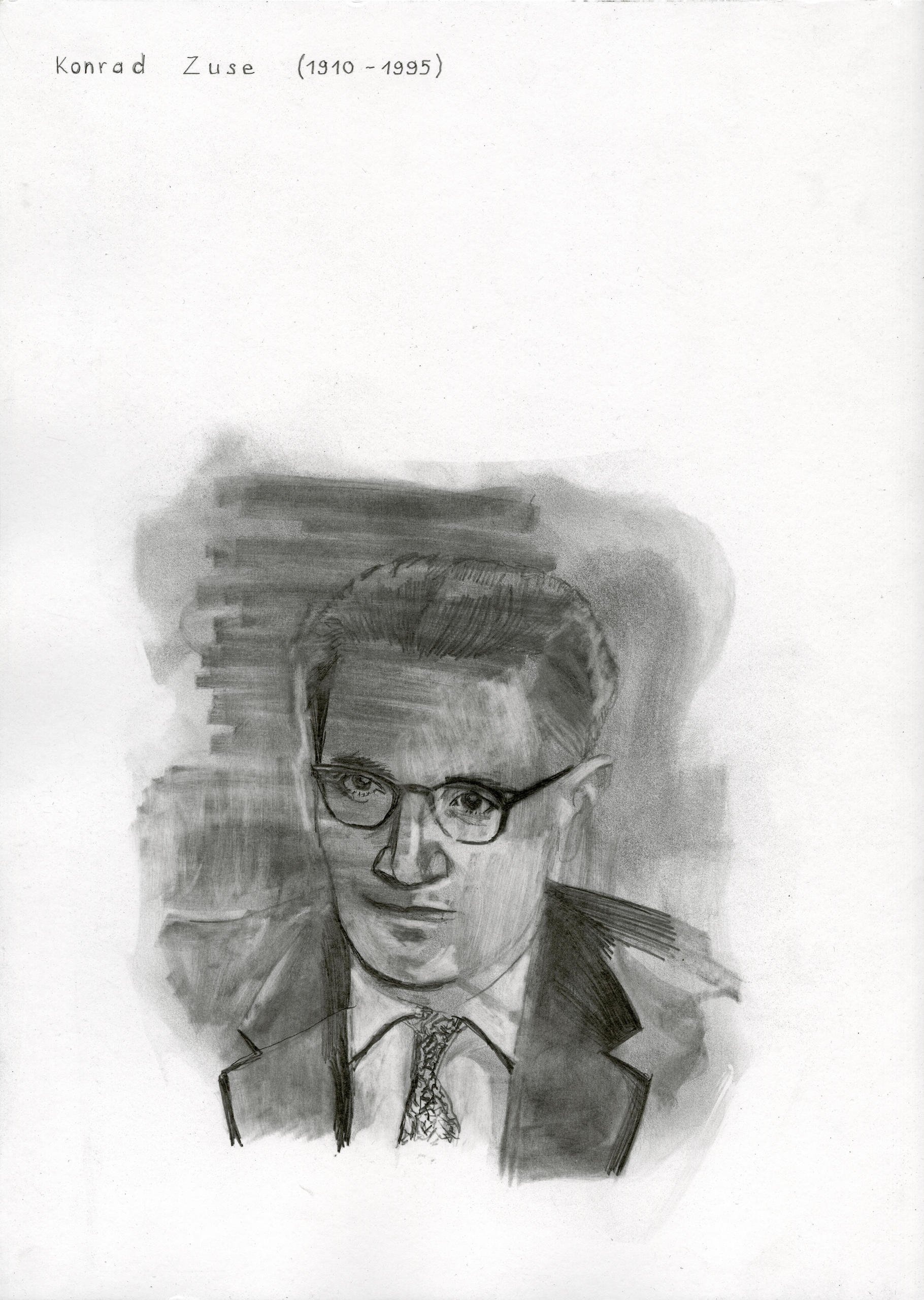
Three drawings positioned side-by-side, showing the V2, Apollo 11 and the SpaceX rocket, reveal how the purpose of rocket science has evolved from weaponry to space exploration to tourism over the decades. The catalogue includes a conversation between Bauer and Alan Emtage, who in 1989 developed Archie, widely considered the first internet search engine.
Dealing with the Matrix
“The internet has become an increasingly important part of our lives for absolutely all the different activities in our life,” Bauer says. “It is also the place that creates the most wealth. As a visual artist I find it is the most incredible source of images and the creation of cultures. In a way it’s a matrix for a lot of stories and ways of thinking, good and bad.”
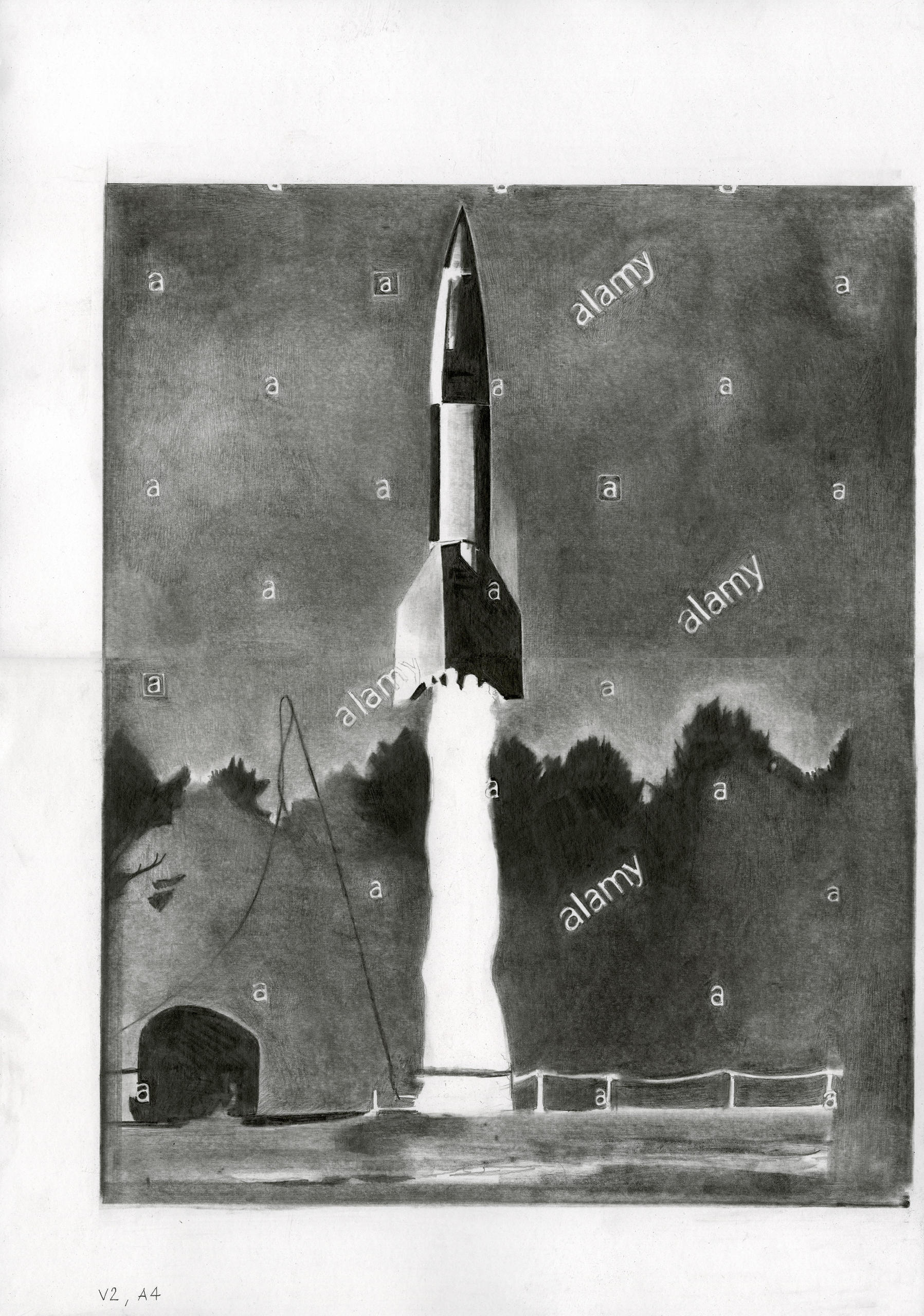
A charcoal gun on the wall at the entrance of the second, much larger hall points visitors towards a more nightmarish, threatening vision of the future – or is it the present? Two giant wall drawings show the Capitol Building in Washington. In one, a military parade dominates the foreground with colourful soap bubbles floating overhead; the second contains references to zombie-fighting video-games and images of torture, death and destruction borrowed from Pieter Bruegel the Elder’s “Triumph of Death.”
Below it is a series of drawings accompanying extracts from Sibylle Berg’s novel “GRM Brainfuck,” which follows four neglected teenagers living on depressed council estates in the northern English town of Rochdale. They spend most of their time glued to smartphones watching “grime” music videos. Bauer says he admires the “directness” of Berg’s writing. Another work in the same room borrows from Japanese manga imagery to address what Bauer describes as the “vortex of void” that can suck up internet users.
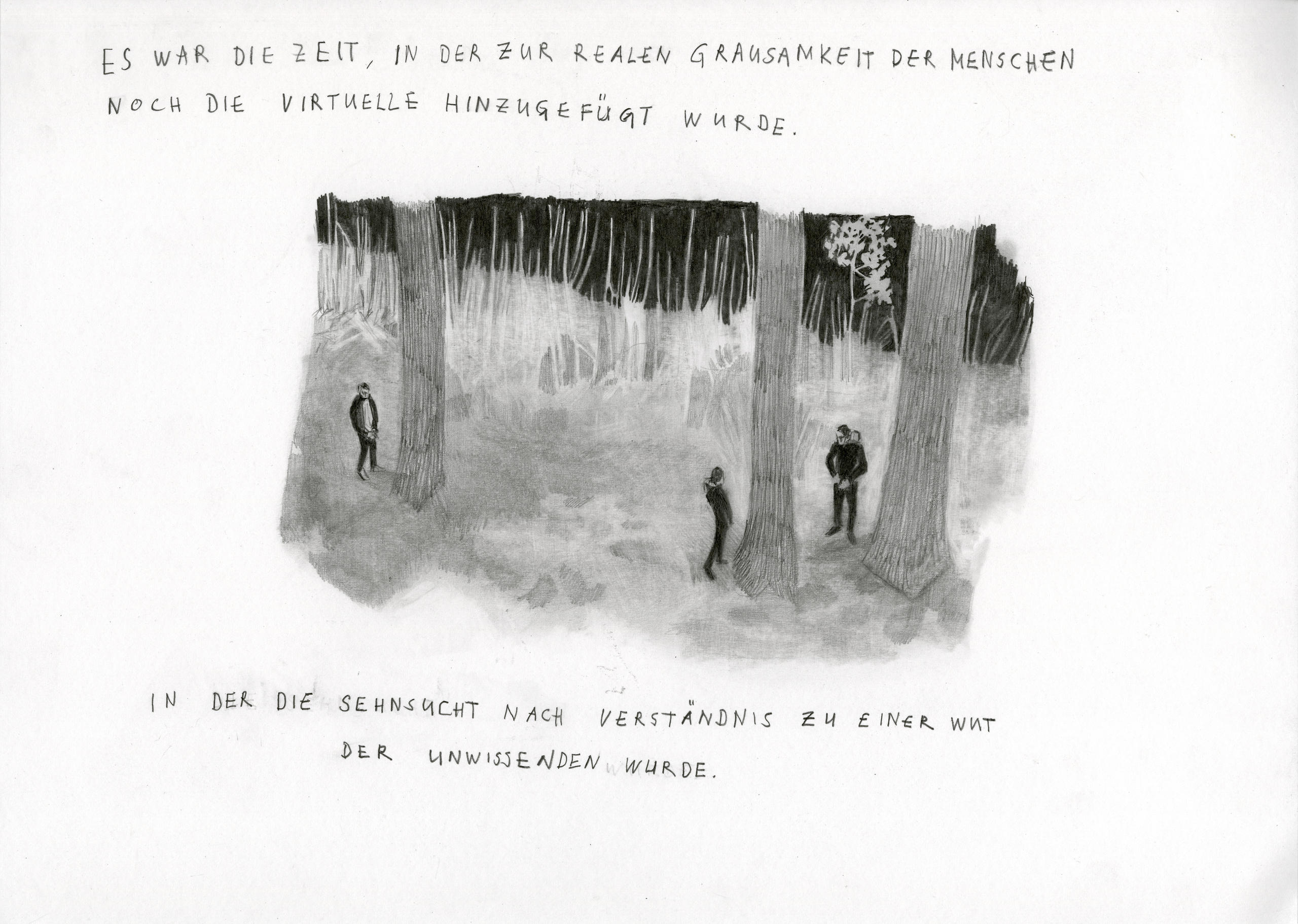
No piece stands alone
Though the exhibition comprises many separate drawings, Bauer thinks of it as a single work.
“It’s one big project,” he says. “If you extract one image, it doesn’t have a lot of meaning without the others. If you take just one drawing you lose a lot of context and content. I really like this idea of building a big narrative, each drawing is a fragment of narrative. Of course, some images function a bit better alone than others. It is difficult for me to dismantle the show. I always have the feeling that it cuts the work in a very brutal way.”
This concept also creates difficulties when it comes to sales, he concedes. “I always try to put a priority on institutions so we can make a special price for the whole thing, or at least a part that makes sense,” he says. “I can understand that private collectors don’t want to buy 10 drawings, but if I sell individual pieces, I will redo the drawings so that my set is always complete.”
He says he enjoys the fact that with drawing – unlike, for example, photography — each work is an original, even if it is a copy. “The copy of a copy is still an original,” he says.
There is a contradiction in the artist’s choice of the very analogue, ancient medium of drawing to examine our multimedial, digital present (although the exhibition does include drawings on electronic paper too).
“Drawing is a very slow medium to produce an image, so it pauses the flux of images a bit,” Bauer says. He also sees it as a way to distance the viewer from the original scene or item portrayed.
“In this gap between the original and the drawing, the viewer fills the gap with his own memory or experience,” he says. “I am interested in that. Drawings function more like triggers than an image you experience.”
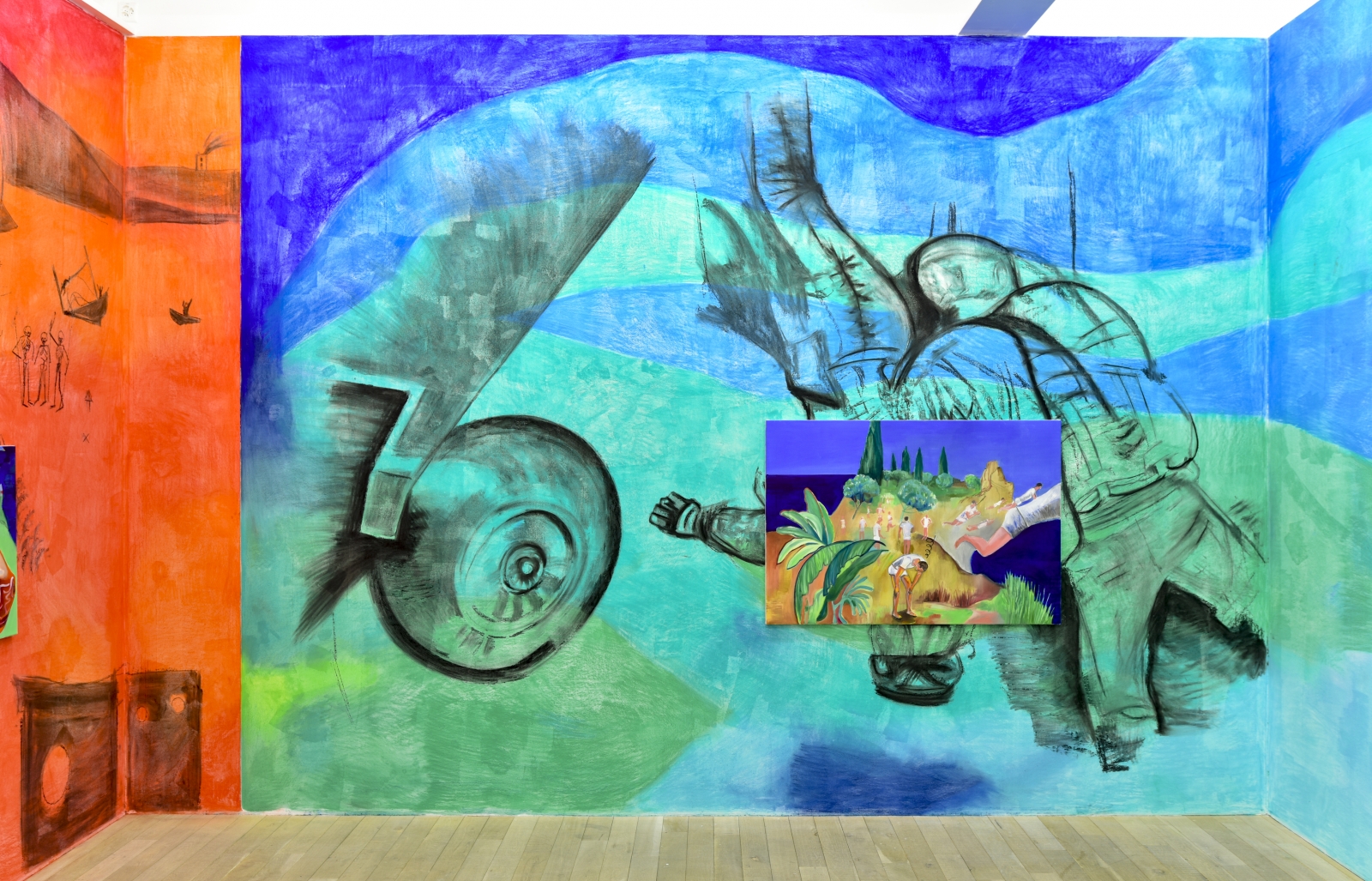
On Saturday September 12, the Galerie Peter KilchmannExternal link in Zurich opens a small but impressive exhibition of Marc Bauer’s new wall installation, with a guided tour by the artist himself. Kilchmann, who represents the artist internationally, is already planning a big show of Marc Bauer’s for next year but decided to put his new work on public display in response to the Meret Oppenheim award and to mark the Zurich Art Weekend, that also opens this weekend.
Bauer is in good company. His installation is placed together with a selection of 14 original vintage prints from the years 1992-1999 by John Coplans (*1920 in London; † 2003 in New York), the British artist, curator and co-founder of the art magazine Artforum, and a series of recent works by the Californian photographer Paul Mpagi Sepuya.

In compliance with the JTI standards
More: SWI swissinfo.ch certified by the Journalism Trust Initiative





























Join the conversation!